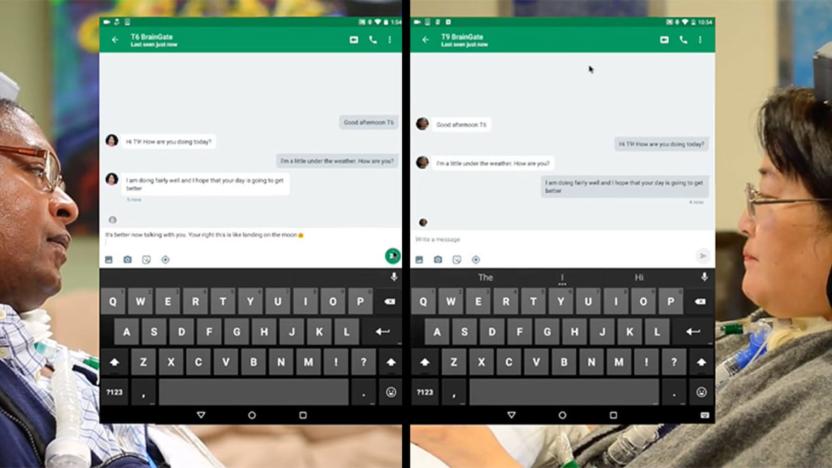motorcortex
Latest

Brain implant lets paralyzed people turn thoughts into text
Three people paralyzed from the neck down have been able to use unmodified computer tablets to text friends, browse the internet and stream music, thanks to an electrode array system called BrainGate2. The findings could have a major impact on the lives of those affected by neurologic disease, injury, or limb loss.

Paralyzed man first to move his arm by thinking about it
Helping paralyzed people move on their own has been a lot tougher than 1970s TV shows led us to believe it would be. For what they believe is the first time, researchers used tech to bypass a quadriplegic patient's severed spinal cord, helping him move his own hand with his mind and feed himself without aid. The work could lead to "a new generation of neurotechnologies that we all hope will one day restore mobility and independence for people with paralysis," says research lead Leigh Hocherg.

Harvard lets human minds control rats, private rodent armies remain distant (video)
Sure, we've seen rats control other rats, but that won't give us a legion of mind-controlled creatures to unleash upon an innocent public, will it? Harvard Medical School may unwittingly assist with solving our (rather misguided) plight, as it just experimented with a system that lets a human mind trigger actions in a rat's motor cortex. The test had sensor-equipped humans watch a screen that flashed in sync with their EEG brain patterns for visual stimulation; as soon their attention shifted to controlling the rat, they triggered an ultrasonic pulse that twitched the rodent's tail. There's a few problems with the implementation beyond the obvious lack of autonomy for the poor target creature, though. The rat's anaesthetized state likely affected the results, and the system isn't currently sophisticated enough to map specific thoughts to corresponding actions. The Harvard team is working to refine the technology, however, and there may be a day when we can satisfy our megalomania... or at least, put the Pied Piper on notice.

Neurochip acts as a second motor cortex
Haven't you ever wished that you had a second motor cortex? If you've suffered a brain injury of some kind, you just might. For the last few years, researchers at the University of Washington have designed and installed a special computer chip attached to the top of monkeys' heads to record the brain's motor cortex nerve signals. This computer chip, dubbed the Neurochip, creates a brain-computer interface that records every movement sent from the motor cortex to the rest of the monkeys' bodies. Then the Neurochip converts those signals into a stimulus that can be fed back to the brain, creating new neural pathways that theoretically could be used if the motor cortex was damaged in some way. We've still got a few questions, like exactly how this happens, how big physically this interface is, and when we should expect human trials. Of course, we've seen previous brain-computer interfaces before, but this one seems a bit more practical than strapping your head to some type of computer. The team published its results in the November 2, 2006 issue of Nature.


